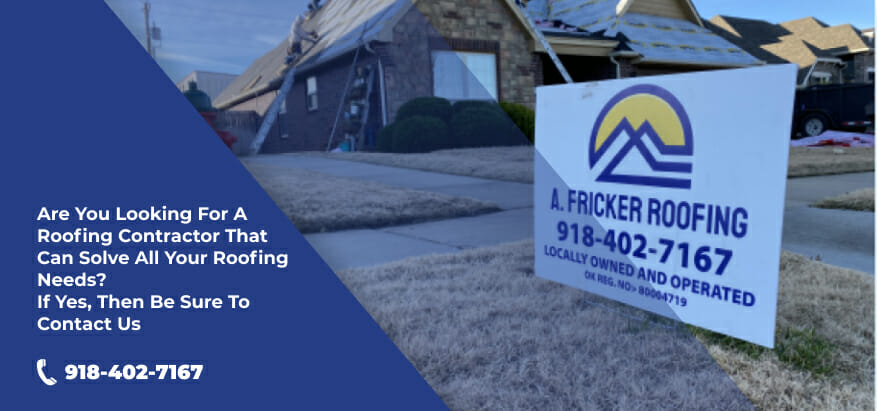Flat roofing has a rich history that dates back thousands of years. From ancient civilizations to modern commercial buildings, the evolution of flat roofing has been fascinating. In this article, we will take a journey through time to explore the origins of commercial flat roofing, its developments over the years, and what the future holds for this essential construction technique.
Early Origins Of Flat Roofing
To comprehend the significance of commercial flat roofing, we must travel back in time and see how it all began. Ancient civilizations, such as Mesopotamia and Egypt, were among the pioneers of roofing techniques. They used locally available materials like clay, mud, and thatch to construct rudimentary flat roofs. These early designs not only sheltered people from the elements but also served as multi-functional spaces for various activities.
Centuries later, commercial buildings in ancient Rome and Greece adopted flat roofs for their practicality and ease of construction. The concept spread across continents, influencing architectural practices in Asia, Europe, and beyond.
Advancements in Roofing Materials
The emergency of bitumen and tar-based materials revolutionized flat roofing during the 19th century. These water-resistant substances extended the lifespan of roofs and paved the way for more durable structures.
In the mid-20th century, the roofing industry witnessed a significant shift with the introduction of rubber and synthetic membranes. EPDM membranes offered enhanced waterproofing capabilities, making them ideal choices for commercial flat roofing.
The Modern Era of Commercial Flat Roofing
The modern era ushered in a wave of innovative roofing systems that continue to shape the industry today. Single-ply roofing systems, such as TPO and PVC, gained popularity due to their ease of installation and impressive performance. These materials provided commercial property owners with cost-effective and efficient roofing solutions.
Moreover, growing environmental awareness led to the development of energy-efficient and sustainable roofing options. Green roofing solutions featuring vegetation and living ecosystems on rooftops emerged as a way to counteract urban heat islands and promote environmental conservation.
Early Challenges and Limitations of Flat Roofs
Despite the progress in commercial flat roofing, several challenges and limitations persist. Traditional flat roofing systems, such as built-up roofs, can be susceptible to leaks and require frequent maintenance. Additionally, the disposal of this roofing material poses environmental concerns, contributing to the burden of landfills.
Innovations In Commercial Flat Roofing
In response to the challenges faced, the industry has witnessed remarkable innovations in recent years. Green roofing solutions, also known as living roofs or eco-roofs, have gained traction. These roofs not only provide environmental benefits but also act as insulators, reducing energy consumption within buildings.
Moreover, photovoltaic and solar-integrated roofing solutions have emerged, combining the benefits of solar power generation with the protective properties of a roofing system. These cutting-edge technologies promote sustainable energy use and contribute to reducing greenhouse gas emissions.
Where We Are Going Next: The Future of Commercial Flat Roofing

The future of commercial flat roofing looks exciting. As technology continues to evolve, so will the roofing industry. Smart technology integration is on the horizon, with the potential for roofs to interact with internal building systems, adjusting to environmental conditions autonomously.
Furthermore, research is ongoing in the development of self-repairing roofing materials capable of mending minor damage on their own. These advancements could extend the lifespan of commercial flat roofing and reduce maintenance costs significantly.
Why Modern Architects Choose to Install Flat Roofs
Modern architects insist on using flat roofs due to their numerous advantages and contemporary appeal. One of the primary benefits is cost-effectiveness, as flat roofs are generally easier and quicker to install than sloped roofs. They provide versatility, allowing architects to create additional living spaces, recreational areas, or platforms for renewable energy installations like solar panels.
The sustainable aspect of flat roofs further contributes to their popularity, as they can be integrated with green roof solutions to promote biodiversity and reduce urban heat island effects. Additionally, the reduced complexity of flat roofing systems leads to lower maintenance requirements, saving property owners time and money.
Another advantage of flat roofing is the utilization of rooftop space. Flat roofs provide additional outdoor space that can be transformed into rooftop gardens. This efficient use of space maximizes the building’s potential and enhances its overall functionality.
Modern Commercial Flat Roofing Materials
1. Built-Up Roofing (BUR)
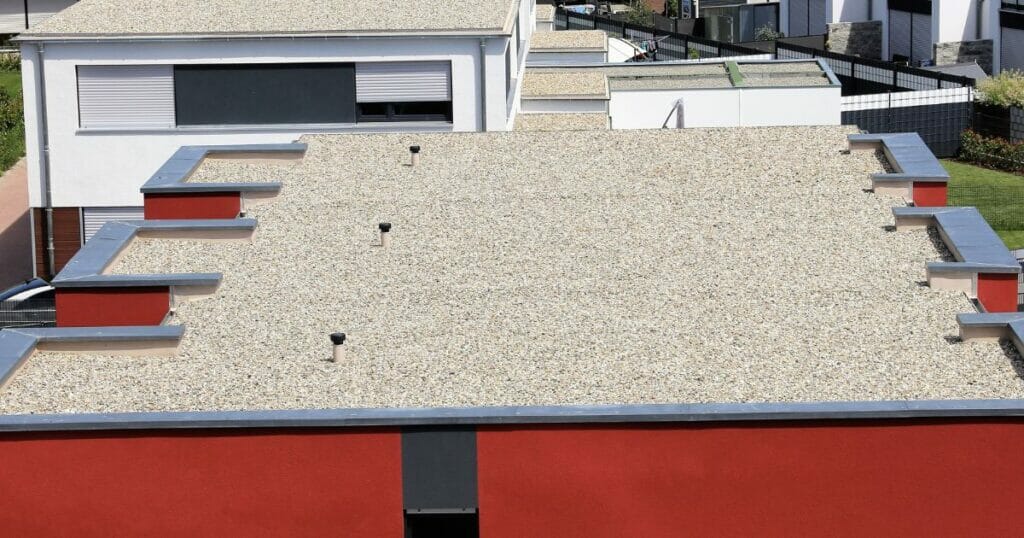
Built-up roofing, commonly known as a BUR, is one of the oldest flat roofing systems. It is composed of multiple layers of bitumen, fabric, and protective coatings. BURs provide excellent waterproofing properties and can withstand foot traffic, making it suitable for roofs with regular maintenance needs.
2. Modified Bitumen Roofing (MBR)
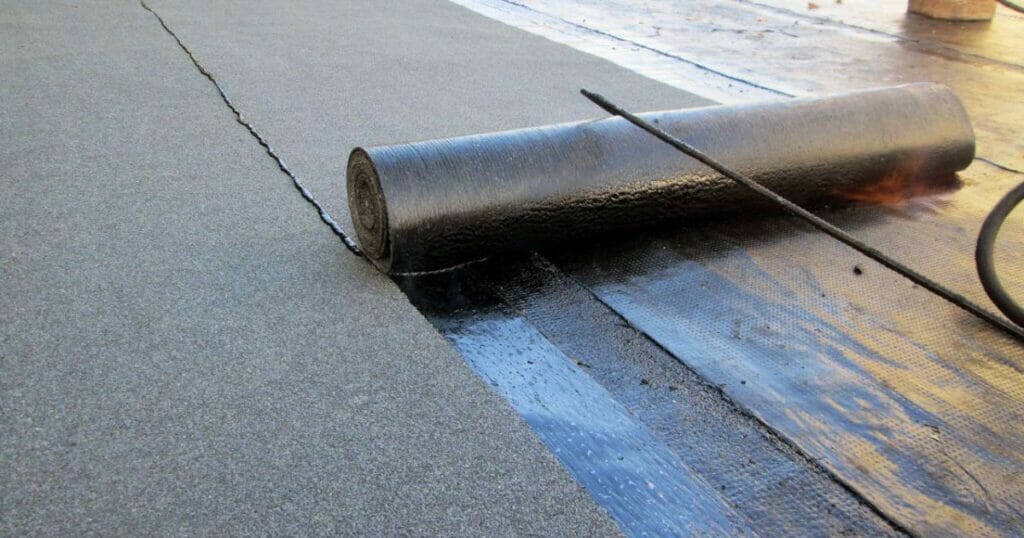
Modified bitumen roofing, MBR, is an evolved version of BUR. It comes in rolls and is easier to install than traditional BUR systems. MBR incorporates modifiers like atactic polypropylene (APP) or styrene butadiene styrene (SBS), which enhance its flexibility and performance under different weather conditions.
3. EPDM Roofing
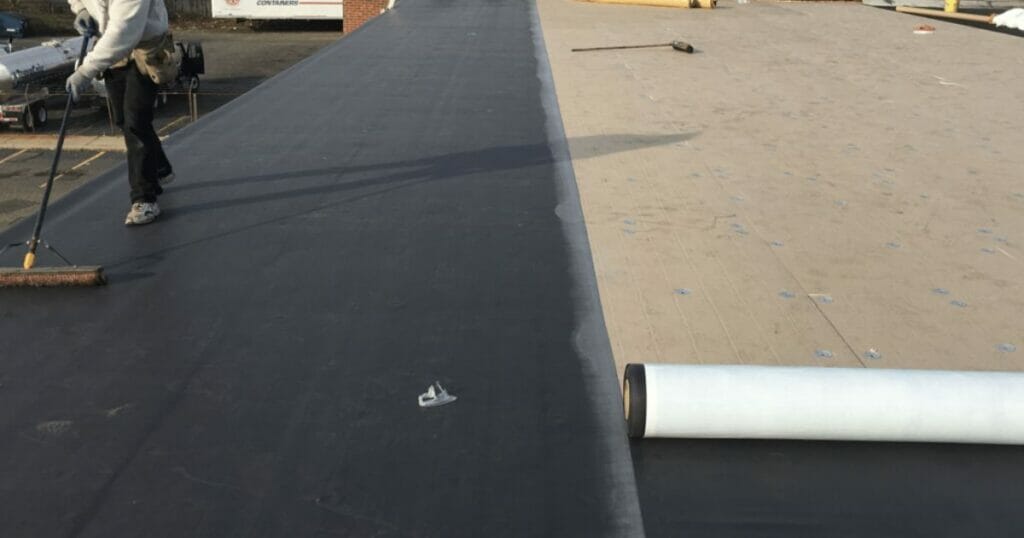
EPDM roofing is a single-ply rubber membrane that offers excellent weather resistance and UV protection. It is easy to install and maintain, making it a cost-effective choice for flat roofs. EPDM is durable and can last for several decades when properly cared for.
4. TPO Roofing
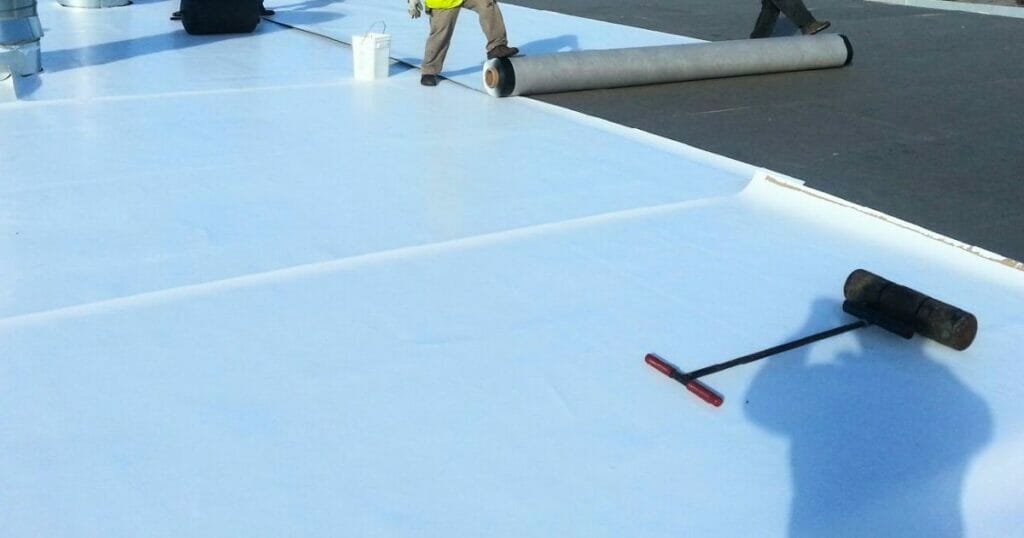
TPO roofs are a popular roofing choice for commercial and industrial buildings. They feature a single-ply membrane made of ethylene propylene rubber and polypropylene, providing exceptional durability, energy efficiency, and resistance to UV radiation. With their reflective surface and ease of installation, TPO roofs offer cost-effective, long-term solutions for various construction projects.
Factors to Consider When Choosing a Flat Roofing System
Selecting the right flat roofing system is critical to ensure its longevity and performance. Several factors should be considered during the decision-making process. The building’s structure and design play a vital role in determining the most suitable roofing system. Some designs may require specific load-bearing capabilities or incorporate skylights and ventilation systems.
Additionally, climate and environmental factors must be taken into account. Areas with extreme weather conditions may require more robust roofing materials that can withstand heavy rain, snow, or high temperatures. On the other hand, energy-efficient roofing materials may be preferred in regions with hot climates to reduce cooling costs.
Installation and Maintenance
Proper installation is key to the success of any commercial flat roofing system. Working with a qualified and experienced roofing contractor is essential to ensure that the installation is done correctly and in accordance with industry standards.
Regular maintenance and inspections are crucial to identifying and addressing potential issues before they escalate into costly problems. Periodic inspections help detect leaks, cracks, or general wear and tear, allowing for timely repairs and maintenance, thus extending the roof’s lifespan.
Selecting the Right Contractor
The quality of the flat roofing system’s installation heavily relies on the contractor’s expertise and professionalism. Choosing the right contractor is paramount to ensure the project’s success and the roof’s longevity.
A reliable contractor should possess essential qualities such as experience, proper licensing, and insurance. Checking references and reviews from previous clients can provide valuable insights into the contractor’s reputation and the quality of their work.
Enhancing Roof Longevity
To maximize the lifespan of a commercial flat roofing system, preventive measures and care tips should be implemented. Regularly cleaning the roof’s surface and clearing debris helps prevent water pooling, which can lead to leaks and structural damage.
Addressing common roofing issues promptly is crucial to avoid escalation. Timely repairs of minor damage can prevent them from becoming major problems that require expensive repairs or even roof replacement.
Evaluating the Return on Investment
Investing in a high-quality commercial flat roofing system may require an initial financial commitment, but the long-term benefits often outweigh the costs. Calculate the return on investment (ROI) and consider factors such as energy savings, reduced maintenance expenses, and potential tax incentives for installing a cost-effective commercial flat roof.
Furthermore, a well-designed and durable flat roofing system can add value to a property. Potential buyers or tenants may perceive a well-maintained roof as a valuable asset, making it easier to attract customers and demand higher property prices.
Conclusion
Commercial flat roofing has come a long way from its ancient origins to the sophisticated systems of today. The evolution of roofing materials and designs has enabled us to create durable, energy-efficient, and sustainable solutions for commercial buildings.
As we look ahead to the future, the integration of smart technology and self-repairing materials promises even greater advancements in the commercial flat roofing industry. With careful consideration of factors like building design, climate, and proper maintenance, commercial flat roofing will continue to play a crucial role in the construction landscape.
Hire Professional Roofers To Replace The Flat Roof On Your Commercial Buildings
If you are considering your commercial roof replacement in Tulsa, OK, be sure to hire professional and skilled roofers. Call A. Fricker Roofing and Waterproofing today at (918) 402-7167 to consult a roofing professional for your commercial roof replacement.

